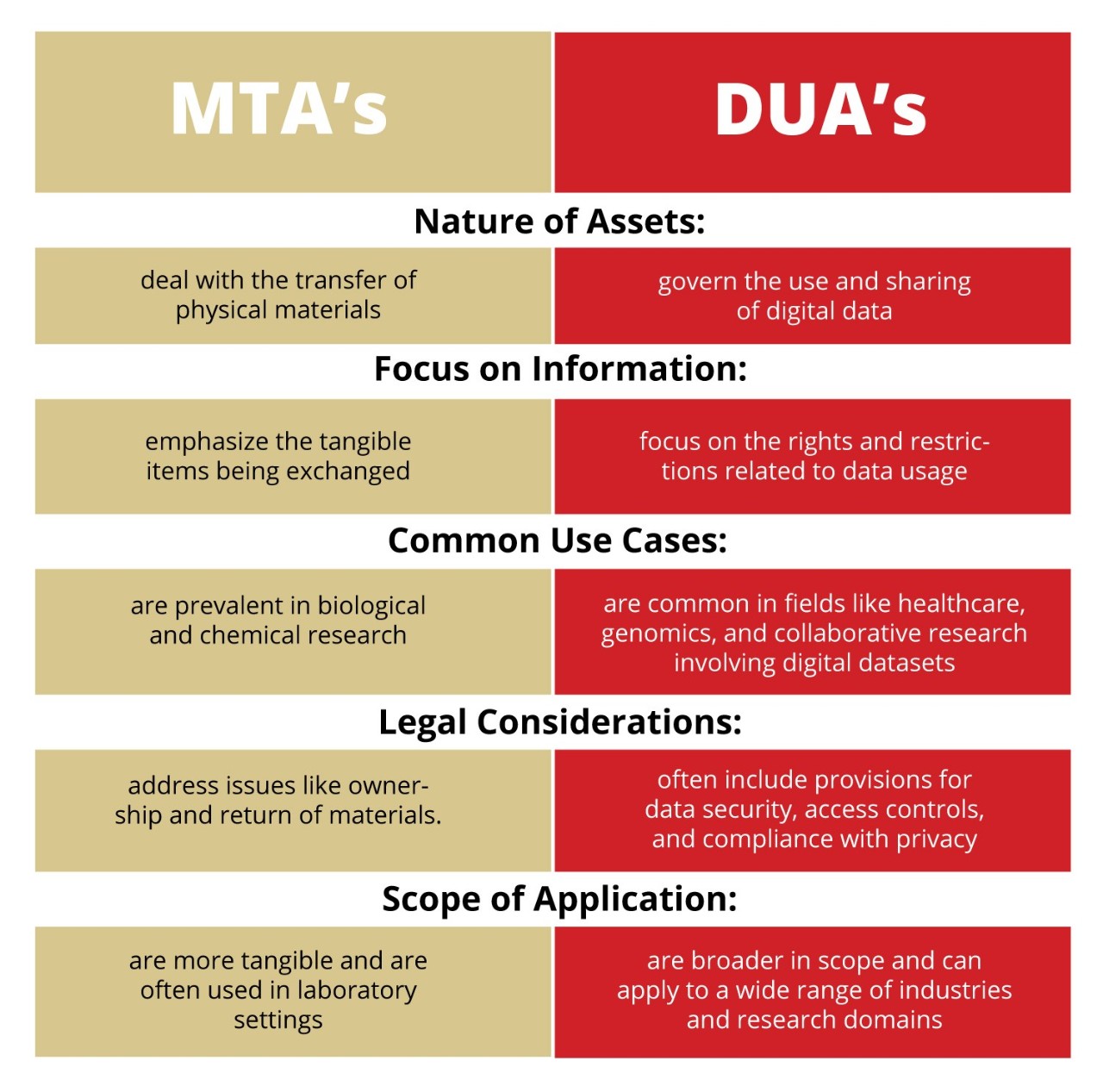In the dynamic realm of scientific research, material transfer agreements (MTAs) and data use agreements (DUAs) are key factors in facilitating groundbreaking collaborations.
As research institutions join forces through these pivotal frameworks, the potential for transformative breakthroughs in diverse fields becomes increasingly tangible.
Safeguarding the shared work of researchers is paramount, making MTA and DUA agreements essential frameworks to govern material and data exchange. These agreements play a vital role in both upholding intellectual property rights and ethical standards, and fostering transparent, mutually beneficial collaborative efforts.
Handling these agreements is the work of Technology Transfer, located inside the 1819 Innovation Hub.
"If someone at UC wants to transfer materials outside UC for research purposes, MTAs and DUAs maintain the property rights of UC as the provider institution and clearly define specific conditions for its use to the recipient institution," Geoffrey Pinski, UC assistant vice president for technology transfer in the Office of Innovation, said.
By engaging in MTAs, research institutions gain access to a wealth of resources, from specialized discovery to valuable datasets that can accelerate their research initiatives. These collaborations not only enhance the research capabilities of researchers but also provide the valuable insights and innovations that can improve the quality of life of society.
An example of how this might look is if UC is transferring a type of cell line, the MTA would specify details such as:
- The quantity of the cell line being transferred
- Conditions for the use of the cell line in experiments
- Any restrictions on sharing the cell line with third parties
- Obligations for the proper handling, storage and disposal of the cell line
Simultaneously, data use agreements are becoming increasingly integral in the era of big data. As the volume of data generated by research projects continues to grow, the responsible and ethical use of this information is paramount in establishing the guidelines for accessing, sharing and analyzing data, ensuring that sensitive information is handled with the utmost care.
Oftentimes it is the researcher who is contacted directly, according to licensing associate Sev Sheets, who said DUAs govern data which isn't publicly accessible or might have some restrictions attached such as patient health data.
Sheets acknowledged most requests come from research institutions, but they also can come from an outside organization like a pharmaceutical company.
"For example, UC is leading the ERICH-GENE study, an international, multi-center, genetic case-control study of intracerebral hemorrhage, a type of stroke. The study involves global data and material sharing from researchers worldwide to identify biological risk factors in diverse populations. This relationship provides UC access to information and materials it wouldn't otherwise have access to," Sheets said.

Graphic/Greg Glevicky
Material transfer agreements and data use agreements are not just legal documents; they facilitate a new era of collaborative research. Collaboration is a potent force for innovation.
"Our goal in reviewing these agreements is to keep the collaboration at the front of our mind, so our office strives to match, if not exceed, the dynamic pace of business operations. Sev stands out with an impressive seven-day turnaround time for these agreements," Pinski said.
Featured image at top: UC biomedical engineering professor Stacey Schutte. Andrew Higley/UC Marketing + Brand






